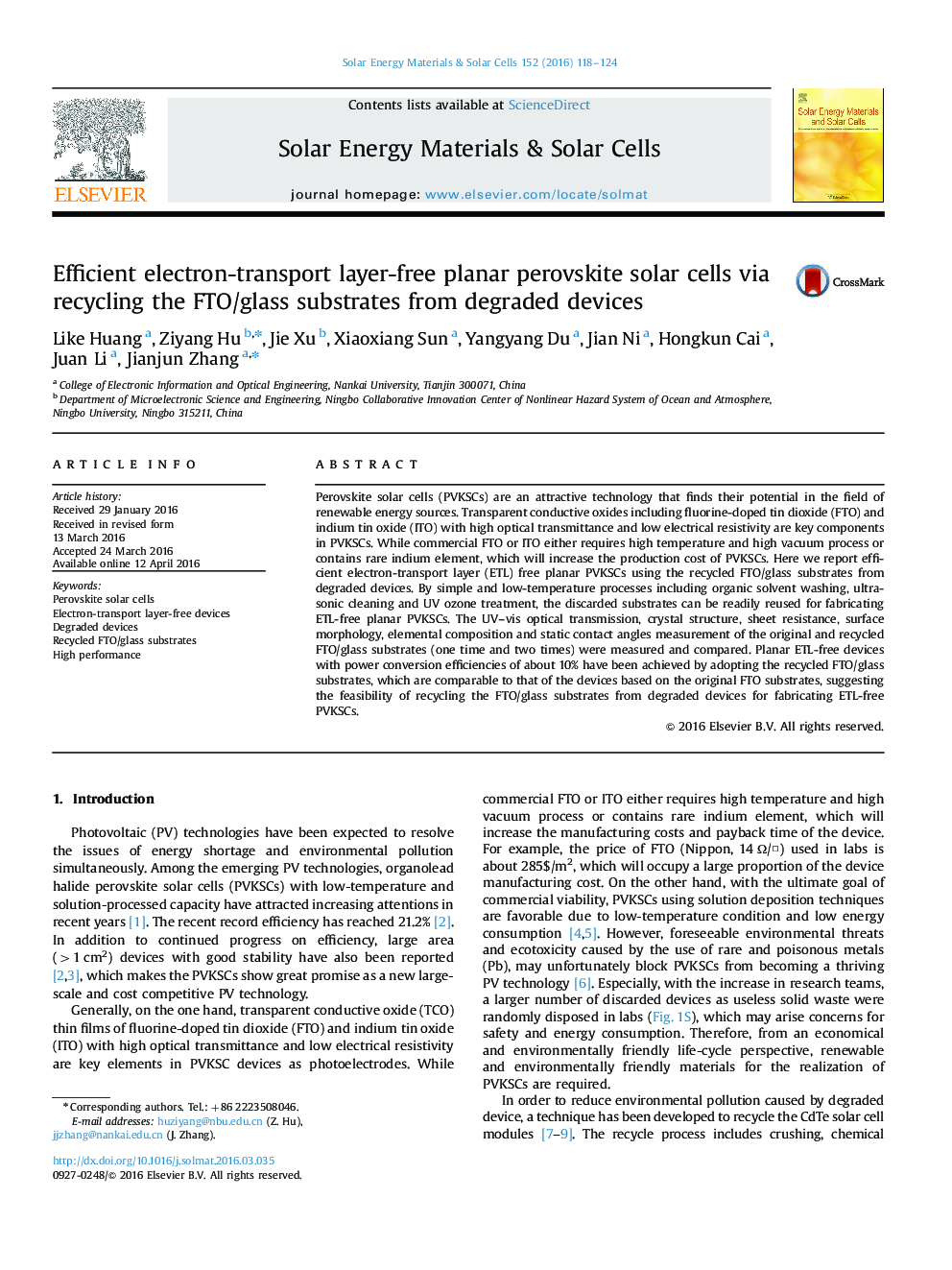| Article ID | Journal | Published Year | Pages | File Type |
|---|---|---|---|---|
| 77585 | Solar Energy Materials and Solar Cells | 2016 | 7 Pages |
•N, N-Dimethylformamide (DMF) can easily dissolve the perovskite films of the degraded devices.•The obtained glass/FTO substrates can be easily rinsed clean with low-energy solution processes.•The cleaned glass/FTO substrates can participate in the new round of devices preparation.•The best device showed an efficiency of 9.97% after 2 times of glass/FTO substrates recycling.
Perovskite solar cells (PVKSCs) are an attractive technology that finds their potential in the field of renewable energy sources. Transparent conductive oxides including fluorine-doped tin dioxide (FTO) and indium tin oxide (ITO) with high optical transmittance and low electrical resistivity are key components in PVKSCs. While commercial FTO or ITO either requires high temperature and high vacuum process or contains rare indium element, which will increase the production cost of PVKSCs. Here we report efficient electron-transport layer (ETL) free planar PVKSCs using the recycled FTO/glass substrates from degraded devices. By simple and low-temperature processes including organic solvent washing, ultrasonic cleaning and UV ozone treatment, the discarded substrates can be readily reused for fabricating ETL-free planar PVKSCs. The UV–vis optical transmission, crystal structure, sheet resistance, surface morphology, elemental composition and static contact angles measurement of the original and recycled FTO/glass substrates (one time and two times) were measured and compared. Planar ETL-free devices with power conversion efficiencies of about 10% have been achieved by adopting the recycled FTO/glass substrates, which are comparable to that of the devices based on the original FTO substrates, suggesting the feasibility of recycling the FTO/glass substrates from degraded devices for fabricating ETL-free PVKSCs.
Graphical abstractIn this article, efficient electron-transport layer-free planar perovskite solar cells with power conversion efficiencies of about 10% have been achieved by recycling low-energy solution processed one time and two times used Glass/FTO substrates from degraded devices, establishing an instructive model towards an attractive technology for sustainable, scalable, energy and resources-conservation-oriented as well as environmentally-friendly energy production.Figure optionsDownload full-size imageDownload as PowerPoint slide
